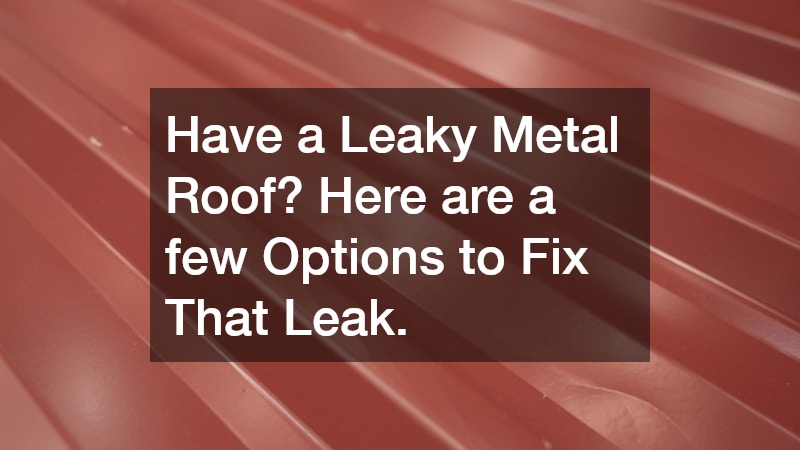A leaky metal roof can quickly turn from a minor annoyance into a major problem if left unaddressed. Metal roofs are known for their durability, energy efficiency, and longevity, but like any roofing system, they are not immune to wear and tear. Over time, exposure to harsh weather conditions, temperature fluctuations, and natural aging can lead to small leaks that compromise the integrity of your roof and your home. These leaks can cause water damage, mold growth, and even structural issues if ignored.
Homeowners facing a leaky metal roof often wonder what options are available to restore its performance without breaking the bank. Fortunately, there are several effective solutions depending on the severity and source of the problem. From simple repairs to professional restoration, identifying the cause of the leak is the first step toward finding the right fix. In this blog, we will explore the common reasons metal roofs develop leaks, how to spot early warning signs, and what actions you can take to protect your home from further damage.
Understanding Why Metal Roofs Leak
A leaky metal roof can occur for several reasons, many of which stem from improper installation or natural wear over time. One of the most common culprits is the loosening of fasteners that hold the panels in place. These fasteners can back out due to thermal expansion and contraction, leaving small gaps that allow water to seep through. Other causes include deteriorating sealant, damaged flashing, and corrosion in exposed areas. Understanding these underlying issues is crucial to determining whether a simple repair will suffice or if more extensive work is necessary.
If you have been searching for roof repair near me because you suspect a leaky metal roof, it’s important to start with a thorough inspection. Professional roofers can identify where the water is entering and evaluate the overall condition of your roof system. They may use infrared imaging or moisture meters to detect hidden leaks that are not visible to the naked eye. Catching these issues early not only saves you money but also extends the life of your roof, ensuring that small problems don’t turn into costly replacements later on.
Identifying Common Signs of a Roof Leak
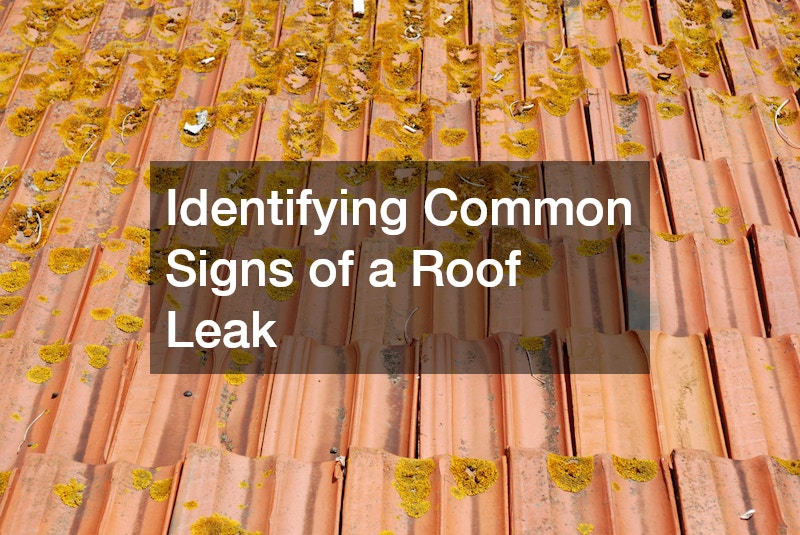
Recognizing the early signs of a leaky metal roof can prevent serious damage inside your home. Water stains on ceilings or walls, peeling paint, or a musty odor in the attic often signal that water is getting in somewhere. You might also notice rust spots or discolored patches on the roof surface itself, which can indicate trapped moisture. In some cases, leaks may not be immediately visible, especially if the insulation absorbs the water before it seeps into your living spaces. Regular inspections are essential, especially after heavy storms or high winds that may have loosened roofing components.
When you notice these warning signs, it’s time to call a professional specializing in roofing repair. They can perform a detailed assessment to pinpoint the exact location of the leak and recommend the most appropriate solution. Whether it’s resealing joints, tightening screws, or replacing damaged panels, addressing the issue quickly is key. By taking prompt action on a leaky metal roof, you can prevent water from spreading into vulnerable areas of your home and maintain the long-term strength and reliability of your roofing system.
Checking for Loose or Missing Fasteners
One of the simplest yet most common causes of a leaky metal roof is loose or missing fasteners. Metal roofing panels expand and contract as temperatures change throughout the year, which can gradually cause screws and bolts to loosen over time. Once this happens, even small openings can allow water to penetrate beneath the roofing surface, leading to leaks that may not be immediately visible. If not corrected, these small leaks can cause moisture buildup, rust, and even insulation damage. Routine inspections can help homeowners catch this problem before it worsens.
Hiring an experienced roofer to check your metal roof fasteners ensures that each one is properly tightened and sealed. They will also look for damaged washers, stripped screws, or corrosion that might compromise the watertight seal. Replacing worn-out fasteners and applying a protective sealant around them can make a big difference in preventing a leaky metal roof from becoming a larger issue. Professional roofers often use high-quality fasteners designed for metal roofing systems, which provide better resistance against wind uplift and temperature changes, helping to extend your roof’s lifespan.
Repairing Damaged Roof Panel
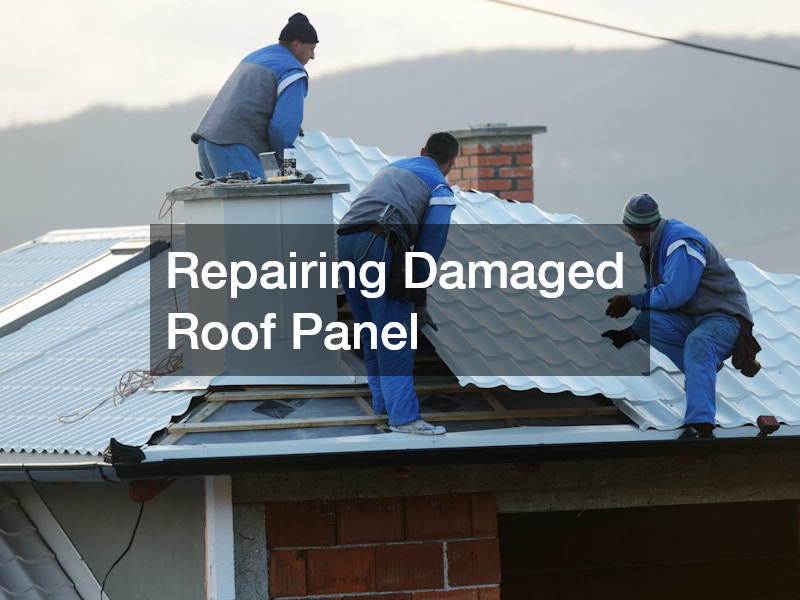
Over time, metal roof panels can become damaged due to storms, falling debris, or simple aging. Dents, cracks, and punctures are all potential entry points for water that can cause a leaky metal roof. Even small imperfections can compromise the watertight barrier, especially if the metal begins to rust or corrode around the damaged area. Left unchecked, water can seep beneath the panels and into the underlayment, creating problems that are much harder and more expensive to repair later on.
When you notice damage, it’s best to contact a professional for roof repair services right away. A trained roofer can determine whether a panel can be patched or if a full replacement is necessary. Patching involves sealing the affected area with specialized roofing materials that blend with the rest of the roof, while replacement ensures complete restoration of structural integrity. In either case, addressing damaged panels promptly helps stop the spread of water intrusion and keeps your leaky metal roof functioning properly for years to come.
Sealing Leaks Around Roof Penetrations
Roof penetrations—such as vents, chimneys, skylights, and HVAC units—are some of the most vulnerable spots for leaks on a metal roof. The flashing around these penetrations is designed to keep water out, but it can deteriorate over time due to weather exposure and temperature changes. Cracked sealant, loose flashing, or gaps around penetrations often lead to a leaky metal roof. Because these areas are so common, regular inspections are necessary to ensure that the seals remain intact and effective.
When sealing or replacing flashing materials, it’s important to have proper workspace access and cleanup resources—especially if debris or old materials need to be removed. This is where a dumpster rental can come in handy during a roof repair project. It allows for efficient disposal of damaged flashing, sealant, or panels, helping the roofer maintain a clean and safe work environment. Once the area is clear, high-quality sealants and flashing can be installed to ensure that no water penetrates these critical areas. With the right materials and professional installation, your leaky metal roof can regain its watertight protection.
Addressing Rust and Corrosion Issues
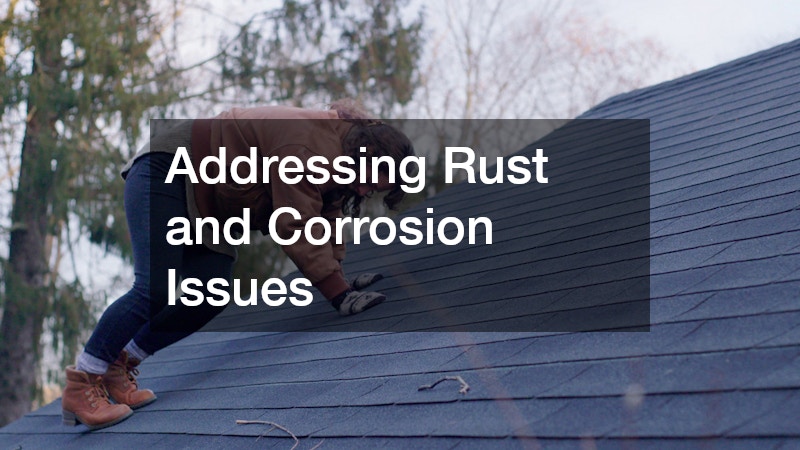
Rust and corrosion are among the most common causes of a leaky metal roof, especially in regions with heavy rainfall or high humidity. When the protective coating on metal roofing panels begins to wear off, the exposed metal reacts with moisture and oxygen, leading to rust formation. Over time, this corrosion weakens the roof panels, creating holes and cracks where water can enter. Even small patches of rust can spread quickly, undermining the roof’s integrity and reducing its lifespan. Regular maintenance, including inspections and cleaning, is essential to keep rust at bay and ensure the roof remains in good condition.
For homeowners tackling a large-scale rust removal or roof restoration project, renting a 30 yard dumpster can make the cleanup process far easier. Removing rusted panels, old coatings, or debris from the roof requires proper disposal to keep the site safe and organized. Once the damaged sections are cleared away, professionals can apply rust-inhibiting primers and specialized coatings to restore the roof’s durability and appearance. Taking proactive measures against corrosion not only prevents leaks but also helps preserve the structure and efficiency of your metal roofing system for the long term.
Replacing Worn or Cracked Sealant
Sealant plays a vital role in maintaining a watertight barrier on a metal roof, especially around seams, fasteners, and flashing. Over time, exposure to ultraviolet rays, heat, and moisture can cause the sealant to dry out, crack, or peel away. Once this happens, water can easily find its way underneath, resulting in a leaky metal roof. Neglecting sealant maintenance can lead to widespread leaks that damage both the roof and the interior of your home. Regularly inspecting and replacing old sealant ensures that your metal roof continues to provide strong protection against the elements.
When it’s time to reseal, homeowners should use high-quality products from a trusted building supply store to ensure lasting results. Professional roofers typically choose sealants specifically designed for metal roofs, as these can withstand temperature fluctuations and adhere tightly to the metal surface. Applying a fresh layer of sealant over problem areas can stop leaks quickly and restore the roof’s ability to repel water. This simple but effective step can add years to the lifespan of your metal roof, preventing the same issues from recurring and keeping your home dry and secure.
Installing Roof Coatings for Extra Protection
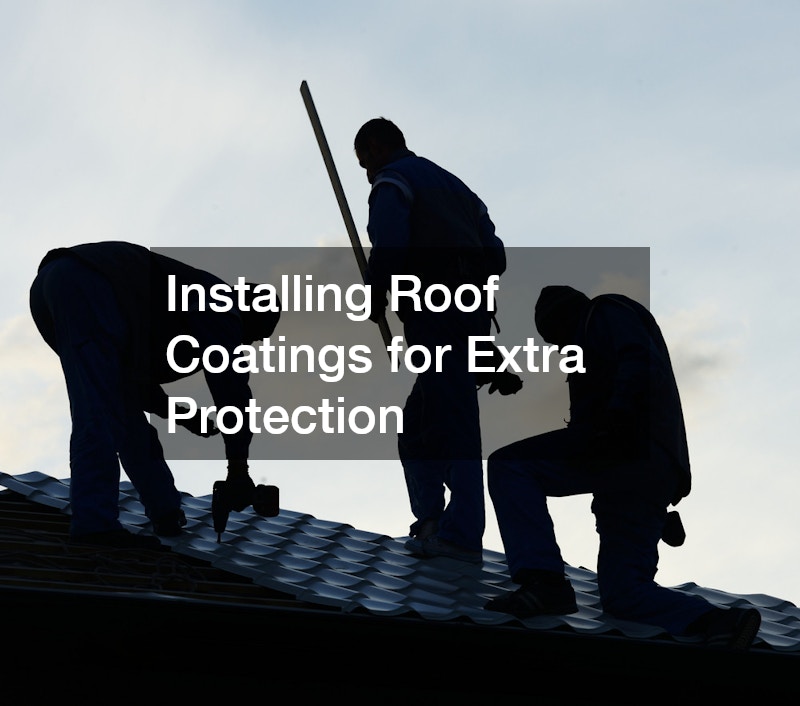
Applying a roof coating is one of the most effective long-term solutions for preventing a leaky metal roof. Roof coatings create a seamless, watertight membrane over the entire surface, sealing small cracks, seams, and imperfections that could allow water intrusion. In addition to preventing leaks, these coatings help reflect sunlight, reducing heat absorption and improving the roof’s energy efficiency. A properly applied coating can extend the life of a metal roof by many years, making it a cost-effective alternative to a full replacement.
When selecting a coating, it’s important to choose the right building materials for your specific roof type and climate. Acrylic, silicone, and polyurethane coatings each offer unique benefits, such as enhanced UV resistance or flexibility in fluctuating temperatures. A professional roofing contractor can recommend the best option for your situation and ensure that the coating is applied evenly and correctly. By reinforcing your roof with a high-quality coating, you can protect your investment and minimize the risk of future leaks, ensuring your leaky metal roof remains durable and efficient year after year.
Knowing When to Call a Professional Roofer
While some minor issues with a leaky metal roof can be addressed by homeowners, many problems require the expertise of a trained professional. Attempting complex repairs without proper tools or experience can lead to further damage, safety risks, or ineffective fixes. Recognizing when a leak is beyond a simple patch or sealant replacement is critical for maintaining the integrity of your roof and protecting your home from water damage. Common signs that it’s time to call a professional include persistent leaks, extensive rust or corrosion, and damage to multiple panels or flashing areas.
A certified residential roofing contractor has the knowledge, equipment, and experience to handle these challenges safely and effectively. They can perform a thorough inspection, identify hidden leaks, and provide a detailed plan for repair or replacement. By entrusting your leaky metal roof to a professional, you ensure that the work is done correctly the first time, reducing the likelihood of recurring leaks. Investing in expert service not only restores your roof’s performance but also protects the long-term value of your home.
Preventing Future Leaks Through Regular Maintenance
Once a leaky metal roof has been repaired, the next step is preventing future leaks. Routine maintenance is essential for keeping your roof in top condition and identifying potential problems before they escalate. This includes cleaning debris from the roof and gutters, inspecting sealant and flashing, tightening loose fasteners, and checking for early signs of rust or corrosion. A proactive approach helps maintain the integrity of your roof and reduces the likelihood of costly emergency repairs.
Large-scale maintenance or restoration projects often generate significant debris, which is why a 20 yard dumpster can be invaluable. Removing old materials, metal scraps, or worn sealant efficiently ensures a clean work environment and streamlines the repair process. By combining regular inspections with proper cleanup and debris management, homeowners can protect their leaky metal roof from recurring issues, extend its lifespan, and maintain a safe and watertight home.
A leaky metal roof may seem daunting, but understanding the causes, signs, and available repair options makes it manageable. From identifying loose fasteners and damaged panels to sealing leaks and addressing corrosion, there are effective solutions for nearly every type of metal roof issue. Applying protective coatings, replacing worn sealant, and performing routine maintenance can help prevent leaks and extend the roof’s lifespan.
While some repairs can be handled by knowledgeable homeowners, involving a professional residential roofing contractor ensures that more complex problems are resolved correctly and safely. Additionally, having proper cleanup solutions like dumpster rentals available can make any repair or maintenance project more organized and efficient. By taking a proactive and informed approach, you can protect your home from water damage, maintain the durability of your metal roof, and enjoy the peace of mind that comes with a properly maintained, leak-free roof.
